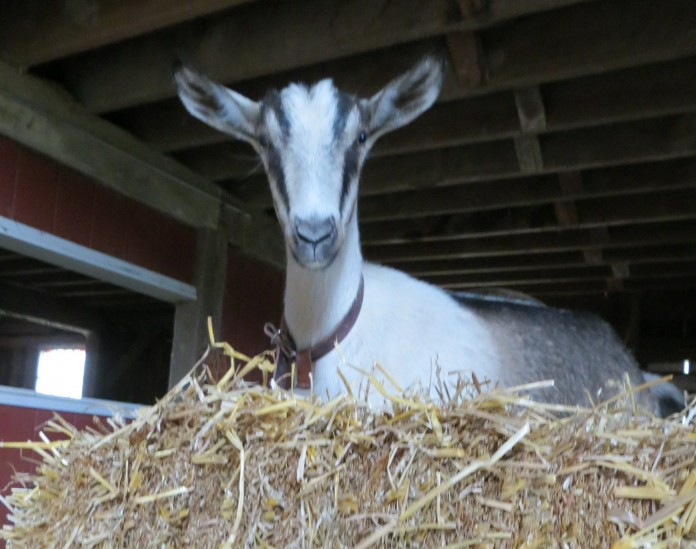In this third and final installment of Why farming changed the way I eat, I want to talk about the dairy in my Farm and Dairy.
Farmers know “pasteurized prepared cheese loaf” isn’t cheese
Although it’s first three ingredients are reminiscent of cheese: milk, water, salt- pasteurized prepared cheese loaf also contains a careful concoction of chemicals for composition, pigments for color, and preservatives to increase shelf life. Manufacturers call it Velveeta, Cheese Whiz, and Nacho Cheese, but farmers call it crazy.
Unlike lab-made cheese loaf, the ingredients and method to make real cheese are simple. Real cheese has much more in common with butter, sour cream, and yogurt than it does with plastic. This is important because the purpose of eating is to provide the body with authentic nutrition.
Consumers demand real milk

Three high profile raw milk cases made Ohio a primary battleground for raw milk legislation. Dairy Farmers Paul and Carol Schmitmeyer, Gary and Dawn Oaks, and Arlie Stutzman all had run-ins with the Ohio Department of Agriculture in 2004-2006.
The best way to get the milk is buy the cow
Each small success is a step in the right direction. Although selling raw milk is still illegal in Ohio, herd shares are legal by court decision. There are no laws to regulate herd shares in Indiana, Kentucky, and Virginia.
Dairy farmers can meet consumer demand for real milk by entering into herd share agreements with customers. In essence, a herd share agreement designates a farmer to manage customers’ dairy animals. Management includes boarding, care, sanitation and milking of the animals. The customer pays a boarding fee to establish ownership, plus an additional fee for a monthly share of the herd’s production.
How farming changed the way I eat
All this leads into how farming changed the way I eat. The farm was already producing eggs and meat for protein and plenty of produce when my husband and I decided to add dairy. I wanted to make nutritious, high-quality cheese and other dairy products and I needed real unadulterated milk to do so. It was important to me that the milk came from animals under my care, so that I could personally oversee their health and the cleanliness of the operation.
We decided small ruminants would be a better fit for our farm than cows. As the sole dairy maid of the herd, I felt more comfortable managing 150 lb. sheep or goats than 1,500 lb. cows.
We debated the virtues of sheep and goats. Both milks are high in fat, which is great for cheese making. Although hard Pecorino Romano is typically made from sheep milk and soft Chevre is made from goat milk, you can use any milk to make any dairy product or drink plain. We finally decided on Alpine Dairy Goats because of their reputation for consistent production and mild flavored milk.
It’s alright to be little bitty
A micro-dairy is unconventional because it produces less than 50 gallons of milk a day. That translates to less than 10 cows or about 25 goats. This spring we plan to extend the barn, expand our herd, and build a separate dairy parlor. Although our micro-dairy won’t hold a candle to many of the big beautiful dairy farms in southern Ohio, being little bitty is alright with me because it allows me to dedicate time to other areas of the farm like poultry and produce.
Diversification is critical to my farm’s sustainability and profits.
Conclusion
The last three posts of Farm Forward have explained why farming changed the way I eat. Although it wasn’t my intention to evangelize the issues of sustainable protein production, local, regional and in-season eating or to start a debate about raw-milk legislation, I hope readers have paused to consider all the above.
If you are a producer or beginning farmer like me I hope you saw a bit of yourself in my story. The future of farming means working together to bring good and wholesome food to tables everywhere.
If you are a consumer you can start by looking at the sticker on your fruit and choosing something grown a little closer to home. Better yet visit a friendly farmer, farm stand or farm market and buy direct. Meat and herd shares and CSAs are a great way to eat sustainable, local, in-season food and support the farm families that grow it.













